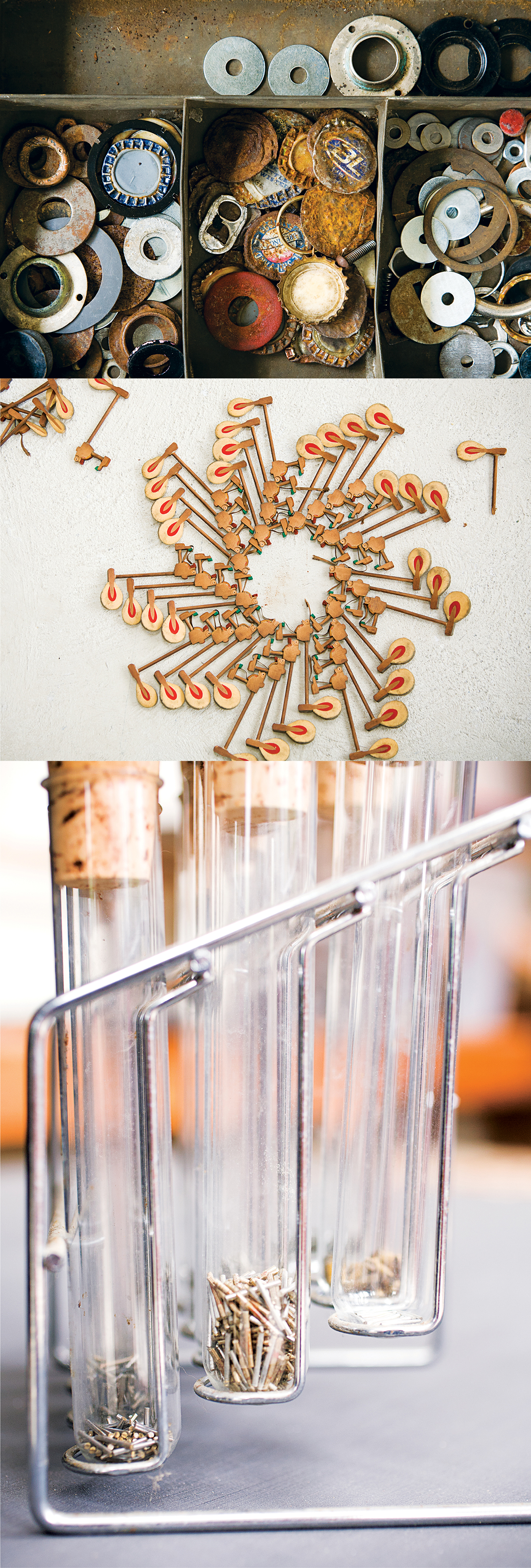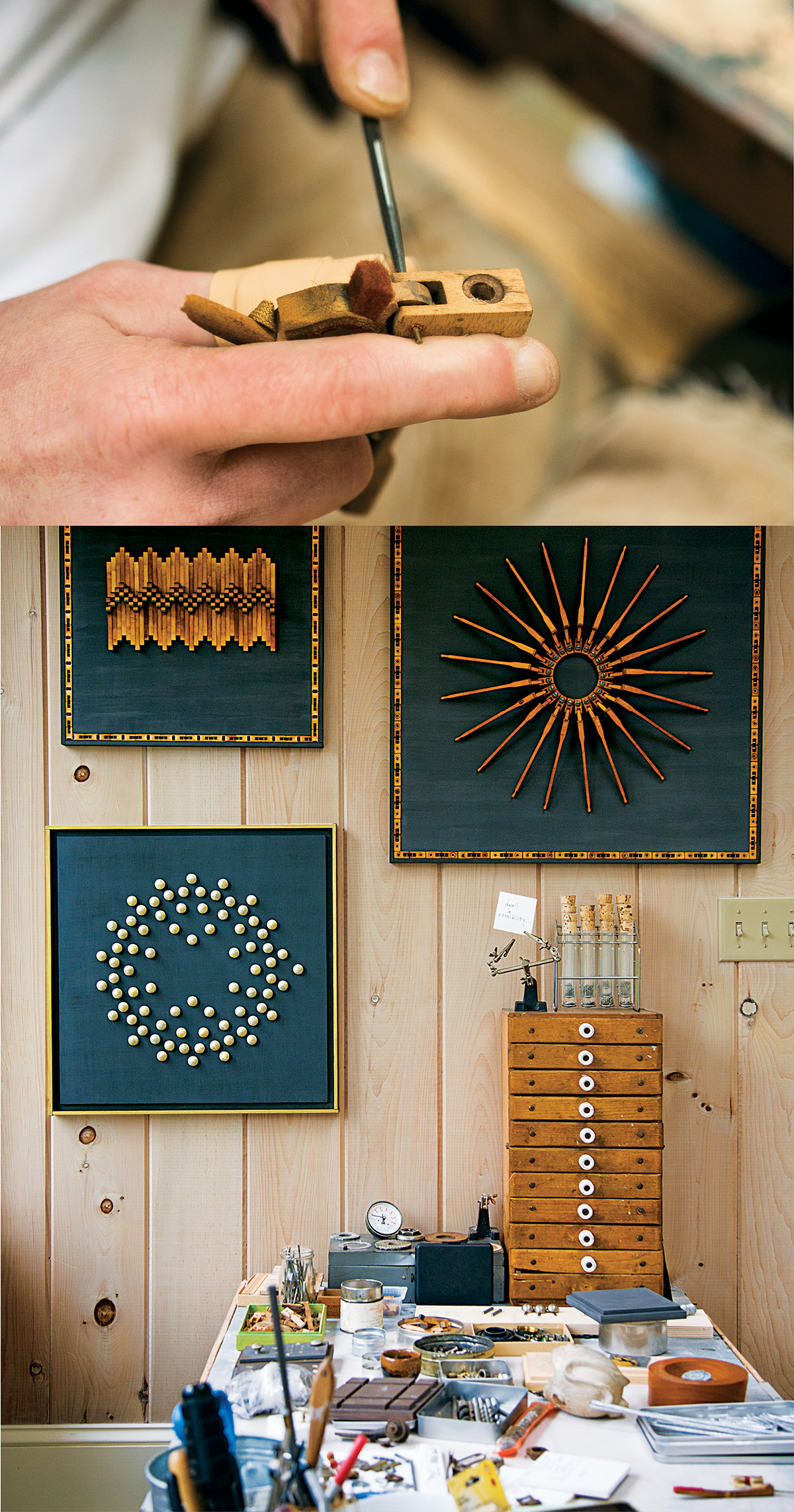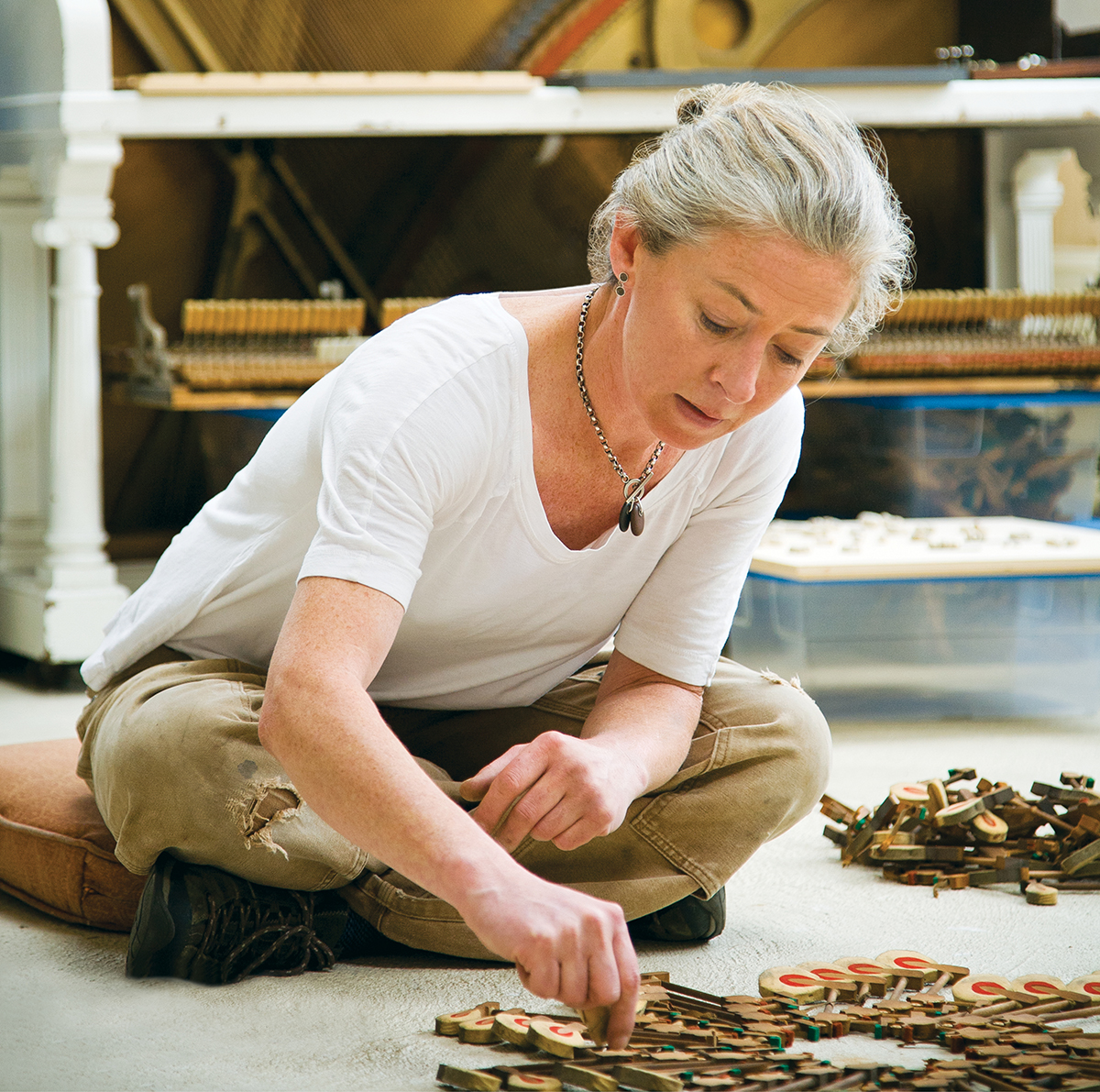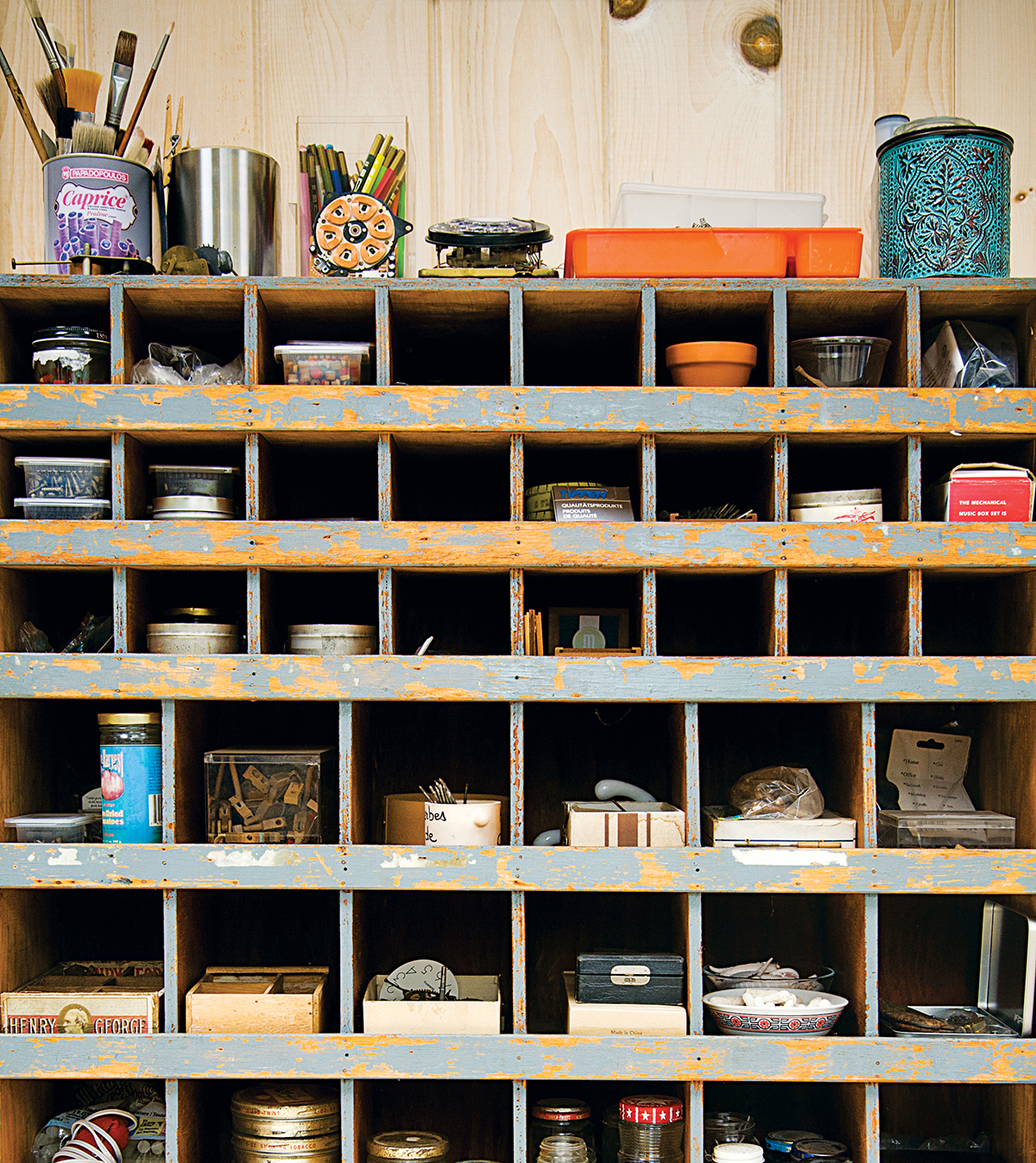Key Player
YOU CAN RECOGNIZE Louise Philbrick by the heavy-duty bandage on her right thumb. Like a pair of reading glasses or a favorite locket, it feels like a part of her — a constant reminder of the artist she has become. Her hands are in constant motion while at work in her South Portland home studio — which makes it easy for that thumb to end up on the wrong side of a hammer or a drill.
Philbrick is an accidental sculptor. Gifted in languages and blessed with a highly mathematical mind, she pursued several careers (including a stint working for an international steel company) before going out on her own as an artist two years ago.
Her medium is objects with history, most frequently antique pianos, which she painstakingly dissects with a screwdriver and pliers before using the parts to create her art. “I choose my objects based on how they show their memory or story,” she says. “When you walk on the beach you see a million stones and don’t notice them, but when you see stacked stones, you think about it. Suddenly they have significance, like a mandala or a symbol.”
After deconstructing a piano, Philbrick begins sorting the felt hammers, wood keys, wires, screws, and dowels into plastic bins. She’s fascinated by the workmanship required to create these parts, and lingers over repairs made with string or glue a century ago.

Above Hilbrick has a drawer for everything, including washers, bottle tops, and pull tabs; middle a piano-hammer piece takes form; bottom Philbrick stores the tiniest parts in test tubes.
Over time, the bits and pieces take form. Their repetitive nature and slight variations appeal to Philbrick’s orderly mind; the delicate armatures might be arranged in dozens of ways before they’re committed to a sculpture. Often, Philbrick creates elaborate stars from them. Other parts embellish her frames, built from the body of the piano.
Philbrick’s subjects are always dumpster-bound — you’d be surprised how many uprights are out there without homes, she says. Like stray cats, they find her; in fact, she’s known around Portland as the Piano Lady. Right now she has dozens of deconstructed instruments in her studio, a sunny room with a concrete floor and skylights — and keeps one spinet in her living room to play. Lately, though, patrons have begun approaching her with their own random objects, pushing her art in new directions.

Above using an awl, she carefully removes a metal pin from a piano mechanism; bottom ver her workbench hang several pieces, including AU79 (bottom), depicting the atomic structure of gold rendered in carriage bolts, and Voiceprints2 (upper left)
One friend came to Philbrick with a box of things from her deceased mother, hoping the artist could create a memorial. “There was plastic stuff, a magnifying glass, my friend’s birth bracelet — all small, not necessarily beautiful objects,” she says. “I agreed to do it and then flipped out. How to convey that this was about the history of the things?” Ultimately, “they became relics in the work.” The magnifying glass is a separate piece that could be used to study the objects up close. “Then there was that horror moment when I presented it to my friend. We bawled our eyes out together.”
All photographs by Pat Piasecki

